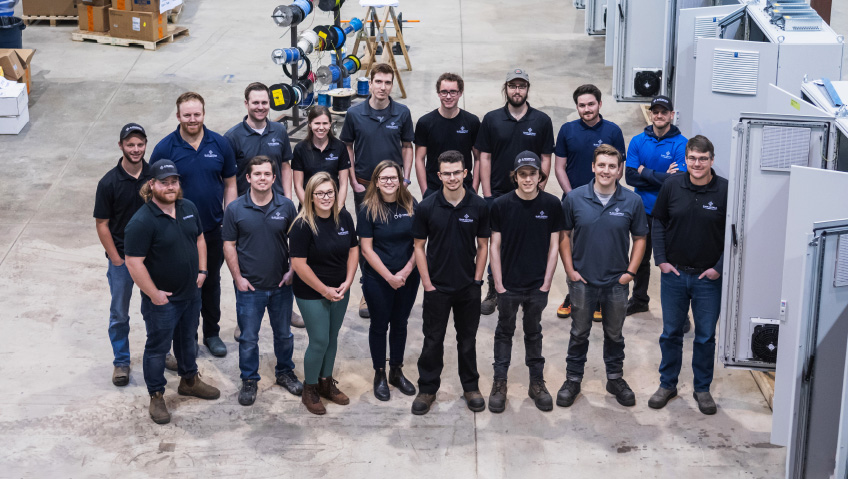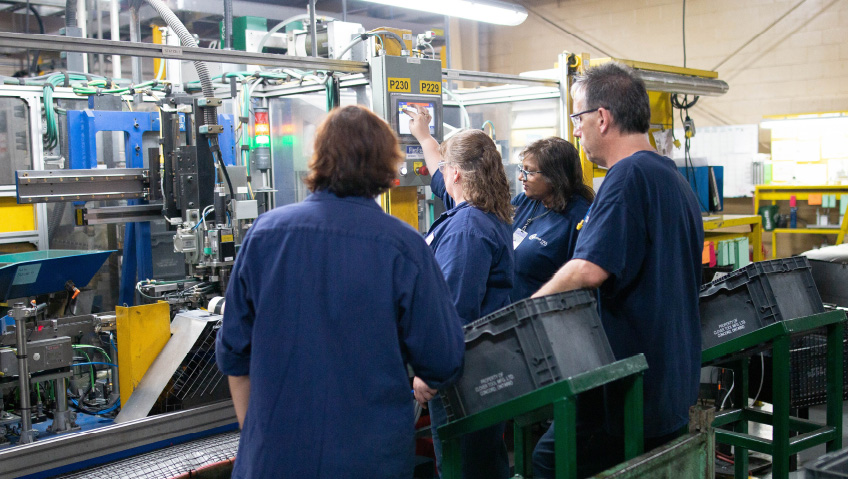With labour shortages hitting both American and Canadian manufacturing exceptionally hard, it is time to look beyond tradition toward women and minorities for solutions that will not only save manufacturing but secure economic growth across North America.
As technological advancement soars and clean manufacturing grows, the days of the gritty sweatshop are long gone. Today, employee comfort and safety standards are at an all-time high, making manufacturing an increasingly attractive career option for women as well as minority groups.
It is estimated that America lost over five million jobs between 2000 and 2010 when the trend of shipping manufacturing abroad dealt the local sector a heavy blow. In addition to this, there was the recession of 2007-2009 that gave an already vulnerable industry another significant knock. When the economy slowly inched towards recovery after 2010, manufacturing also steadily started making its way back to American shores, and technological developments led to a change in how manufacturing is now done in many fields. More women and minority groups started joining the industry, and more are desperately needed.
Industry advocacy group Canadian Manufacturers & Exporters (CME) reports some grave statistics around labour shortages in this country alone. In a recent survey, some 80 percent of nearly 230 fabricators indicated that they have a hard time finding sufficient skilled labour. In light of fewer young people looking to working in the industry and not enough immigrants entering Canada to fill these positions, labour shortages appear to remain a problem for some time.
Advocacy groups are suggesting doing more than just focus on realigning tertiary education goals to motivate students to join the manufacturing industry. They also suggest increasing the number of people settling in Canada for economic reasons. With women making up little more than 30 percent of the Canadian manufacturing industry’s labour force, it stands to reason that employers have space for more women and people from minority groups on their teams. In the country’s 2016 census, visible minorities in Canada included just short of eight million people, making them a vast source of untapped talent.
In the United States, the situation is much the same. A 2018 manufacturing skills gap study by the Manufacturing Institute in collaboration with Deloitte Consulting LLP points out that 2028 is likely to present the U.S. with nearly 2.5 million vacancies in the manufacturing industry. The deficit, according to the report, is mainly driven by a combination of baby boomers retiring over the next ten years and a severe shortage of applicants qualified in science, technology, engineering, and math. While the number of women in manufacturing peaked in 1990 at around 33.2 percent according to the U.S. Census, numbers had dropped to 29 percent by the next count in 2016.
Much is being done to remedy the situation. In America, the national trade association Women in Manufacturing (WiM) started the Women in Manufacturing Education Foundation (WiMEF) in 2016 with the single goal of ensuring more and better chances for women to train within the industry. There are also a growing number of science, technology, engineering, and mathematics (STEM) camps on offer, diversity partner programs that address the unconscious bias that exists toward women in manufacturing, and numerous networking opportunities. Some advocacy groups also offer lunch-and-learn events for women in engineering as well as professional development opportunities.
Around 43 percent of women also report learning as much as they can from mentors in the industry. A shortage in STEM qualification remains a big challenge, however.
To radically increase the less than five percent of women who indicated that careers in technology are their biggest dream, professional services firm PwC recently launched the Tech She Can Charter, described as “a commitment by organisations to work together to increase the number of women working in technology roles in the UK.” The Tech She Can Charter promises to educate young women on the opportunities available in a world where equal contributions to technology development are not only a possibility but a reality.
While the initiative is still only available in the United Kingdom, the news has gone viral and will hopefully spread to North American shores soon as young women from around the globe are reported to be showing interest.
According to management consulting firm McKinsey & Company’s 2020 ‘Women in the Workplace’ report, COVID-19 has not done the current underrepresentation of women in corporate positions any favours. As countless women lost large parts of their support networks during the last year’s health crisis, many also lost their options in terms of childcare, leaving numerous mothers with no other choice but to return home to take care of their families. This has highlighted the need for the industry to become more progressive.
An existing shortage of women in managerial posts was a big challenge already at the beginning of 2020. Now, there are even fewer to step into senior executive roles than before. The McKinsey report warns that unless a concerted effort is made to curb the loss of women in the workplace due to resignation and other factors, longstanding efforts to improve their position in the industry may be rendered obsolete.
“This is the first time we’ve seen signs of women leaving the workforce at higher rates than men,” the report states. The solution for staff retention presented by the McKinsey report underlines the need for intense effort to be made toward more reasonable, healthier work environments with improved office hours and other considerations.
ThomasNet, a North American online supplier and product directory, launched its Thomas Industrial Survey series, and its ‘Women in Manufacturing Benchmark Study’ of 2020 supports this, showing a direct relationship between the number of women available in the workforce and the number of women being promoted to managerial positions and beyond.
The threat of manufacturing losing more women remains real. The study indicates that only a third of general manufacturing staff and a quarter of its leaders are female. Within this range, women are best represented in healthcare with close to 55 percent representation, whereas the aerospace and defence industry came in at the lowest with less than 25 percent female representation. Of all the industries consulted, it was the medical and agricultural industries that were most positive about the future of women in fabrication.
The highest percentages of women in leadership positions in North America can be found in Pennsylvania, Colorado, and Connecticut, followed by Georgia, Michigan, and Texas. In terms of general manufacturing positions, the lowest overall score was in Ontario according to the study.
Looking ahead, work prospects in manufacturing are promising. Indications are that there will be a continued demand for biochemical engineers, statisticians, machinists, logisticians, metal and plastic computer numerically controlled machine tool programmers, and several other positions in the sector.
Women are increasingly realizing the benefits of working in manufacturing. Studies from a generous cross-section of companies show that more than 50 percent of North American firms offer parental leave, around 94 percent offer health insurance, and over 80 percent conduct formal performance reviews. Moreover, around 70 percent offer tuition reimbursement and more than 60 percent of companies take care of paid paternity and maternity leave. As trends are turning toward more sustainable working conditions, there are also companies introducing on-site childcare as well as paid time off for volunteer work.
There is also the STEP (science, technology, engineering, production) Ahead initiative brought to life by the Manufacturing Institute to help guide, inspire, and empower women to join the manufacturing industry in the United States. The organization takes care of skills development and stimulates opportunities in this currently male-dominated sector. It also investigates the field and has developed a diversity and inclusion initiative to support and drive minority representation across the manufacturing industry and advocate for equal opportunities across America.
Research also indicates that twice as many women are advising daughters and nieces to join the manufacturing industry as in 2017. Nearly two-thirds of women interviewed during studies by The Manufacturing Institute, not-for-profit educational organization and association for supply chain management APICS, and professional services company Deloitte noted improvements in the industry’s general approach to women colleagues in the past half-decade. Add to this the fact that the same study shows that women earn more than half of all associate’s, bachelor’s, and master’s degrees, and the manufacturing industry appears to be on the best end of a winning streak if it can just woo more women to join.
Luckily, it is not only university degrees that are needed in this sector. Because modern manufacturing requires a great variety of skills, multiple paths lead to manufacturing careers today. From taking technical courses at school to completing certifications and degrees at community colleges and in-house training and paid apprenticeships, there are many opportunities for women to join manufacturing companies.
Recent research also shows that the more education support and training a firm offers, the higher its team’s confidence in its ability to grow. With well over 50 percent of manufacturers indicating that they will be looking to employ new staff in 2021 and beyond and nearly three million jobs becoming available over the next six to seven years, manufacturing prospects abound.






